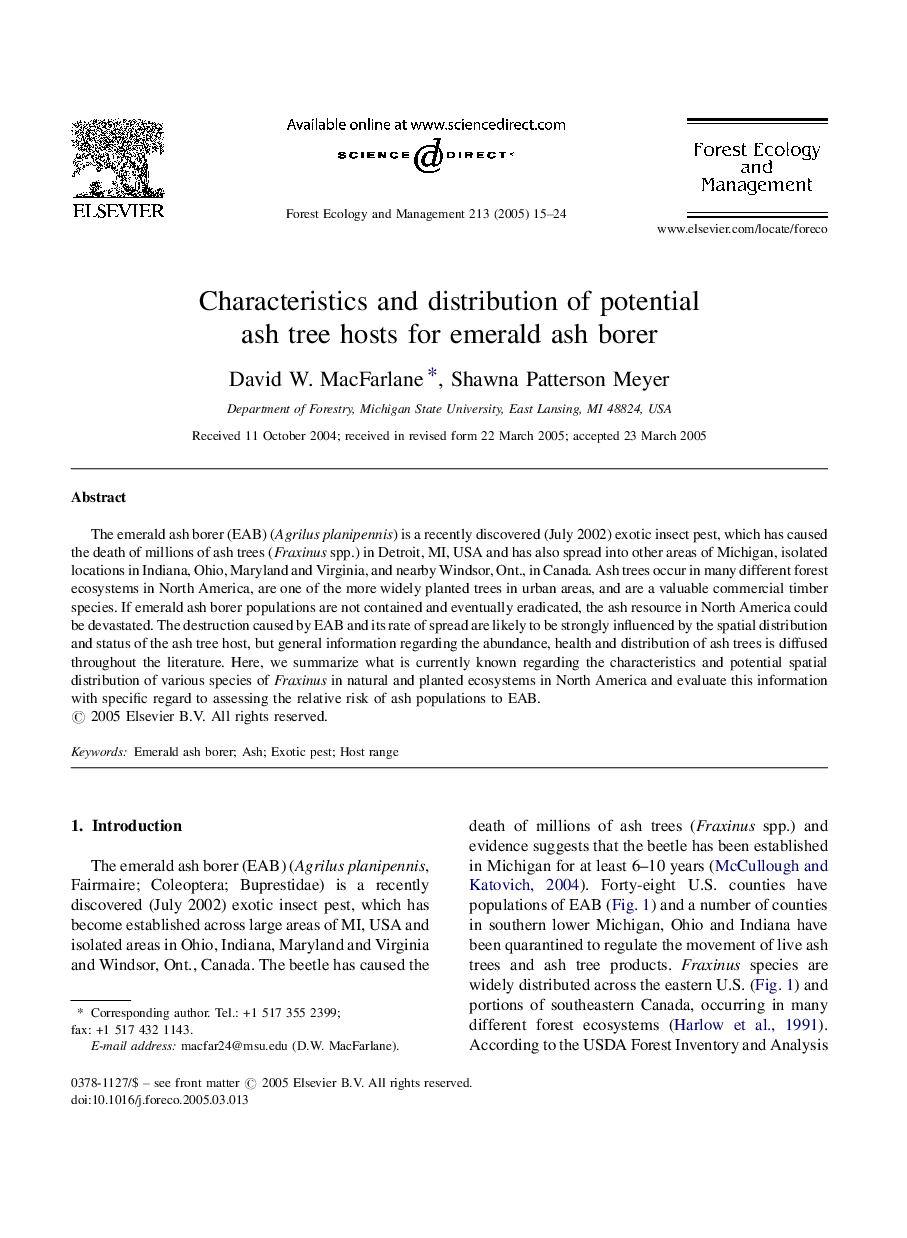| Article ID | Journal | Published Year | Pages | File Type |
|---|---|---|---|---|
| 9620261 | Forest Ecology and Management | 2005 | 10 Pages |
Abstract
The emerald ash borer (EAB) (Agrilus planipennis) is a recently discovered (July 2002) exotic insect pest, which has caused the death of millions of ash trees (Fraxinus spp.) in Detroit, MI, USA and has also spread into other areas of Michigan, isolated locations in Indiana, Ohio, Maryland and Virginia, and nearby Windsor, Ont., in Canada. Ash trees occur in many different forest ecosystems in North America, are one of the more widely planted trees in urban areas, and are a valuable commercial timber species. If emerald ash borer populations are not contained and eventually eradicated, the ash resource in North America could be devastated. The destruction caused by EAB and its rate of spread are likely to be strongly influenced by the spatial distribution and status of the ash tree host, but general information regarding the abundance, health and distribution of ash trees is diffused throughout the literature. Here, we summarize what is currently known regarding the characteristics and potential spatial distribution of various species of Fraxinus in natural and planted ecosystems in North America and evaluate this information with specific regard to assessing the relative risk of ash populations to EAB.
Keywords
Related Topics
Life Sciences
Agricultural and Biological Sciences
Ecology, Evolution, Behavior and Systematics
Authors
David W. MacFarlane, Shawna Patterson Meyer,
